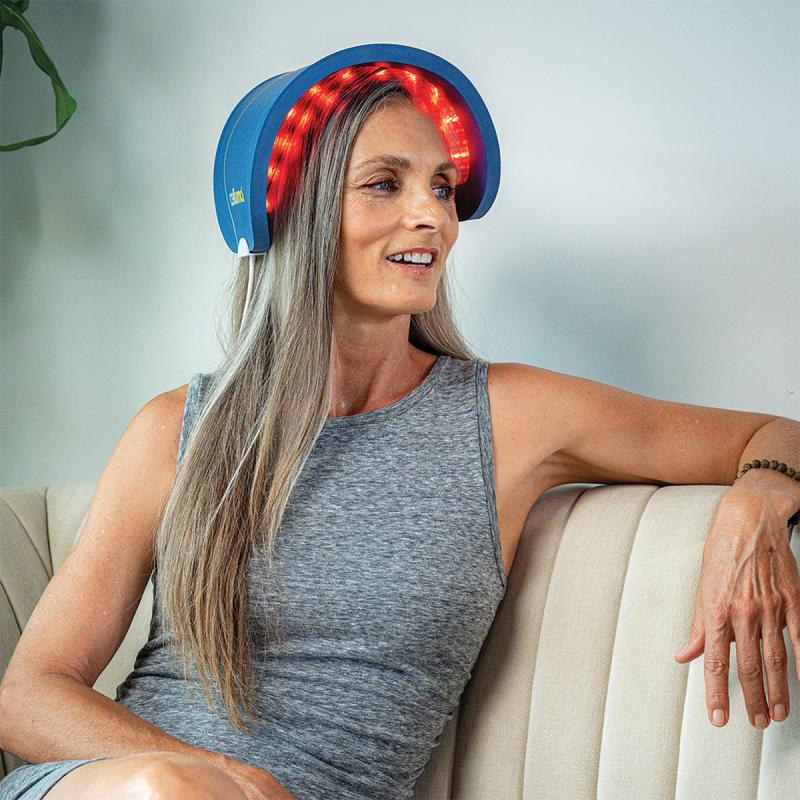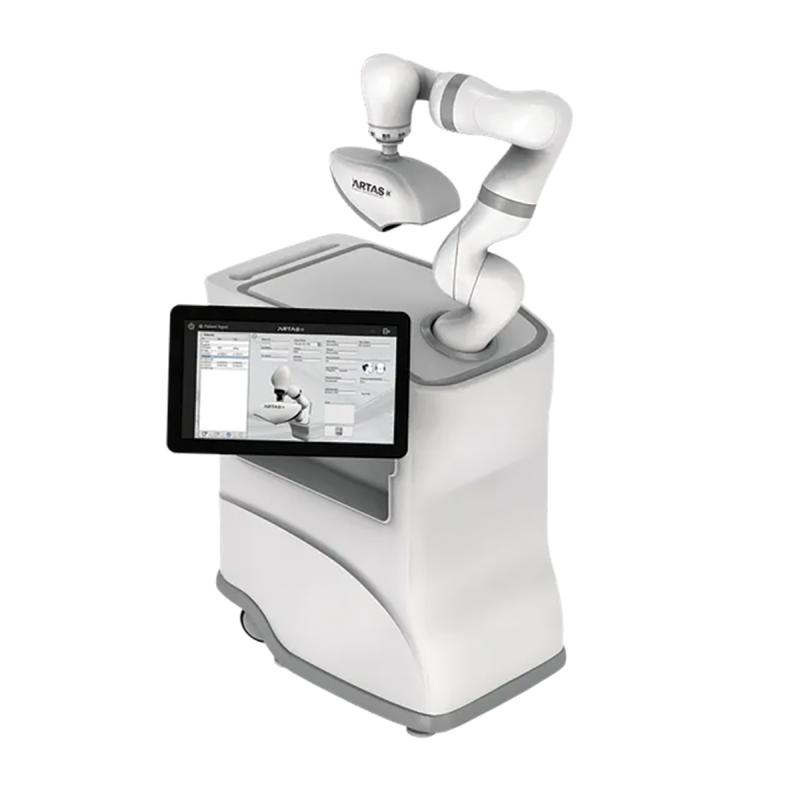According to the Cleveland Clinic, humans shed between 50 and 100 single hairs per day. Hair shedding is normal and a natural part of the hair growth cycle. However, when an excessive amount of hair falls out and less hair grows in, that is considered hair loss, also known as alopecia. Studies show that more than 50% of people assigned female at birth will experience noticeable hair loss. “The root cause of hair loss in women is often difficult to diagnose,” says Andy Goren, M.D., chief medical officer of Daniel Alain. “The most common form of hair loss in women is telogen effluvium. The onset of telogen effluvium is often rapid and is reversible over time. It can be caused by stress, diet, pregnancy, medications, infection, injury, or lifestyle. The most common non-reversible progressive form of hair loss in women, called female pattern hair loss or androgenetic alopecia, is due to the influence of genetics and hormones.”
According to Goren, another common type of hair loss in women is traction alopecia, which is caused by the constant pull on hair follicles due to styling, excessive brushing, heat, extensions, and ponytails. Traction alopecia is generally not reversible.

As more focus is placed on the topic of hair loss in the spa and wellness industry and scalp health (also referred to as the skinification of hair), people will be able to discover new and innovative treatment options that might be available to them. Choosing the best treatment option depends on each client’s individual situation and needs, as hair loss is not a one-size-fits-all category, and a comprehensive health assessment is crucial. “First, the type of hair loss needs to be accurately assessed,” says Nancy Samolitis, M.D., a board-certified dermatologist and skincare expert. “Once we understand the underlying cause of hair loss, the treatment can be tailored to address those issues.”
With improvements in technology, medical spas and dermatologist offices are able to offer clients a number of different options to treat hair loss symptoms. For example, at Pura Vida Medspa (Fulton, MD), the HydraFacial Keravive is designed to cleanse, stimulate, nourish, and hydrate the scalp for fuller, thicker, and healthier-looking hair. This non-invasive, three-step process has gained popularity for its ability to address various hair and scalp issues, such as clogged follicles, poor circulation, and dryness.
At Attain Med Spa (multiple locations), clients also have various options to help treat hair loss. In addition to prescription-based solutions, the medical spa’s menu of services includes JetPeel Hair Restoration, which helps gently exfoliate dead skin cells from the scalp without any downtime required and infuses the scalp with minoxidil peptides and essential nutrients, stimulating hair growth; Ultra Hair Restoration, which is a procedure that combines a LaseMD laser treatment with the application of KeraFactor topical growth factors to create microchannels in the scalp, enhancing the absorption of vital compounds; Platelet-Rich Plasma (PRP) Therapy, which is a non-surgical treatment that involves the extraction and concentration of the client’s own platelets, which are then skillfully reintroduced to stimulate hair follicles; and IV Therapy for Hair Health, in which specialized IV therapy treatments are designed to provide the body with the essential nutrients it needs to support healthy hair growth from within. Another option is stem cell therapy, which is available at Biotech Cosmetic Surgery & Medical Spa (Bay Harbor Islands, FL). This treatment is designed to restore the growth of natural hair follicles found on the scalp to achieve long-lasting results using the client’s own stem cells to help heal and repair tissues.
Given the many treatment options and products available to help combat hair loss, it’s important to remind clients to visit a dermatologist at the first sight of excessive hair shedding or hair loss to ensure they receive a proper diagnosis and an appropriate treatment plan.
Laser-Focused on Hair Loss

Lumenis recently introduced FoLix, a laser system designed to combat hair loss. Recently cleared by the Food and Drug Administration, FoLix utilizes fractional laser and Lumenis’s proprietary technology tailored for hair to offer results in four to six monthly sessions with no chemicals, needles, anesthesia, surgery, or downtime. FoLix’s technology delivers precise pulses of laser that leverage the body’s natural processes to stimulate hair follicles.
Pre-clinical and clinical studies measuring the laser’s effect showed a positive impact on hair growth, with noticeable improvements in scalp hair appearance and an increase in hair count. “For decades, we’ve been at the forefront of innovation in energy-based devices,” says Tzipi Ozer-Armon, CEO of Lumenis. “Our latest breakthrough redefines what is possible and further empowers individuals to be their true selves.”
Light the Way
Light therapy is an effective way to help increase circulation and stimulate hair growth. Check out a few of the options available today for at-home use.
The Red Light Hat from HigherDose harnesses the power of 650nm red light to help increase blood circulation to the scalp, promoting healthier hair follicles and rejuvenating the scalp. This can lead to decreased hair loss, optimized hair follicle function, and increased growth.
www.higherdose.com

The LaserCap is a light and flexible cap lined with true laser diodes to illuminate the hair follicles with monochromatic red laser light at a finely tuned wavelength and intensity. It helps to re-energize inactive hair follicles using low-level laser therapy to help promote hair regrowth.
www.lasercap.com
Restore by Celluma Light Therapy is a device that helps boost hair thickness, extend the growth phase, and reduce the catagen stage, resulting in increased hair volume and improved scalp health.
www.celluma.com
AI Alert
Venus released the ARTAS iXi robot, an upgrade to the original ARTAS robot for natural, longer-lasting results for hair restoration. The ARTAS iXi, unlike previous models, uses AI to analyze and select grafts with no risk of linear scarring and protects terminal hair to maintain a natural appearance.

It uses advanced robotic technology to perform follicular unit extraction and can identify and extract individual hair follicles without damaging the surrounding tissue, leading to better graft survival. The upgrades have improved the efficiency of hair restoration procedures, resulting in better physician experience and patient outcomes, as the robot mimics natural hair-growth patterns.